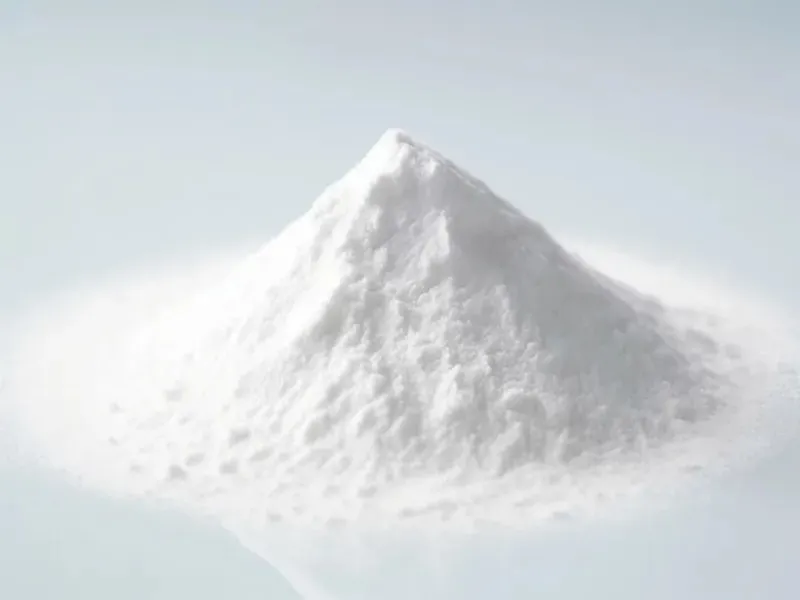Application of calcium hydroxide is widely recognized in various fields, particularly in construction, agriculture, and medicine. It has excellent binding properties and boosts durability. In agriculture, calcium hydroxide is a soil amendment. It neutralizes acidity and improves nutrient availability for crops. Also, in medicine, it is used for its antimicrobial properties in dental treatments. It also serves as a pH regulator in some drugs. Overall, the diverse applications of calcium hydroxide highlight its importance across multiple industries.
Calcium hydroxide, or slaked lime, is made by calcining and digesting limestone or oyster shells. It is usually a powder. It is widely used in food, medicine, chemicals, and water treatment.

Calcium hydroxide is less soluble than sodium and potassium hydroxides. So, its solution is less corrosive and less alkaline. So, it can be used as a food acidity regulator. It buffers, neutralizes, and solidifies. Food-grade calcium hydroxide is highly active and pure. It has a loose structure, good whiteness, and low impurities. It contains no harmful elements like Pb and As.
1. Calcium preparations
The market has nearly 200 calcium products. They include calcium carbonate, citrate, lactate, and gluconate. Calcium hydroxide is a key raw material in the calcium industry. Among them, calcium gluconate is common. In my country, it is currently produced by fermentation.
2. Milk powder
Calcium hydroxide can regulate acidity in milk powder, cream powder, and infant formula. This includes sweetened milk powder and their modified products. The amount used is appropriate according to production needs.
Milk powder, especially infant formula, contains various proteins. These proteins have ionized side chains on their surfaces. They carry a net charge, and the side chains can be titrated.
3. Rice tofu and ice jelly
Use soaked rice. Add water. Grind into a rice slurry. Add slaked lime water and stir. Heat and stir until the slurry is cooked and thick. Pour the boiled rice slurry into a mold. Once cool, cut it into small pieces with a knife. The rice tofu is ready. Among them, slaked lime acts as a coagulant and also provides calcium. Slaked lime also needs to be added during the production of ice jelly, which also acts as a coagulant.
4. Preserved eggs
Slaked lime, soda ash and wood ash are used as raw materials to make a slurry and wrap it on the surface of the egg. After a time, it becomes a preserved egg that can be eaten. It happens through chemical reactions. When protein encounters a strong alkali, it gradually turns into clear water. If the alkaline solution keeps entering the egg, the alkalinity rises. The solution is entering through the semipermeable membrane. The alkaline protein molecules begin to polymerize. The viscosity increases, turning into a gel to form a preserved egg. If the alkali is excessive, it will be detrimental to the quality of the preserved egg.
5. Konjac food
The production and use of konjac gel food by the Chinese people has a history of 2,000 years. The method is to add 30-50 times the water to konjac flour. Stir it into a paste. Add 5%-7% calcium hydroxide to the flour. Then, mix and solidify it.
6. Sugar production
In sugar production, calcium hydroxide neutralizes the acid in the syrup. Next, we add carbon dioxide. It precipitates and filters out the remaining calcium hydroxide. This reduces the sugar’s sour taste. It can also combine with sucrose to form sucrose salt. So, it can be used for molasses desugaring or sugar refining.
7. Others
Calcium hydroxide can be used as a buffer, neutralizer, and curing agent for beer, cheese, and cocoa. It can adjust pH and cause coagulation. So, it can be used to make medicines, food additives, and high-tech biomaterials (HA). It can also be used to make VC phosphates for feed additives, calcium cyclohexaneate, calcium lactate, and calcium citrate. These are additives for the sugar industry, water treatment, and high-end organic chemicals. It helps make acidity regulators and calcium sources. These include edible meat semi-finished products, beverages, and medical enemas.
The calcium hydroxide industry is old. Its annual output can exceed 10 million tons. The UK, US, Germany, Japan, and South Korea mainly produce it. The latter two mainly make high-purity, high-whiteness versions.
